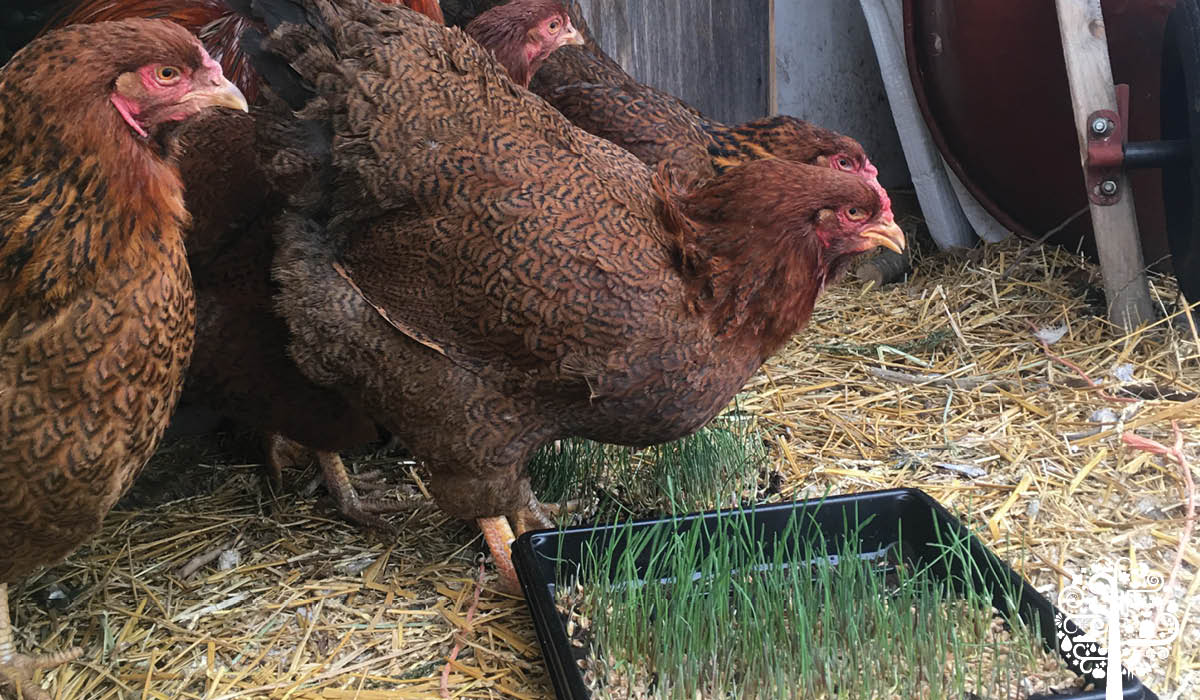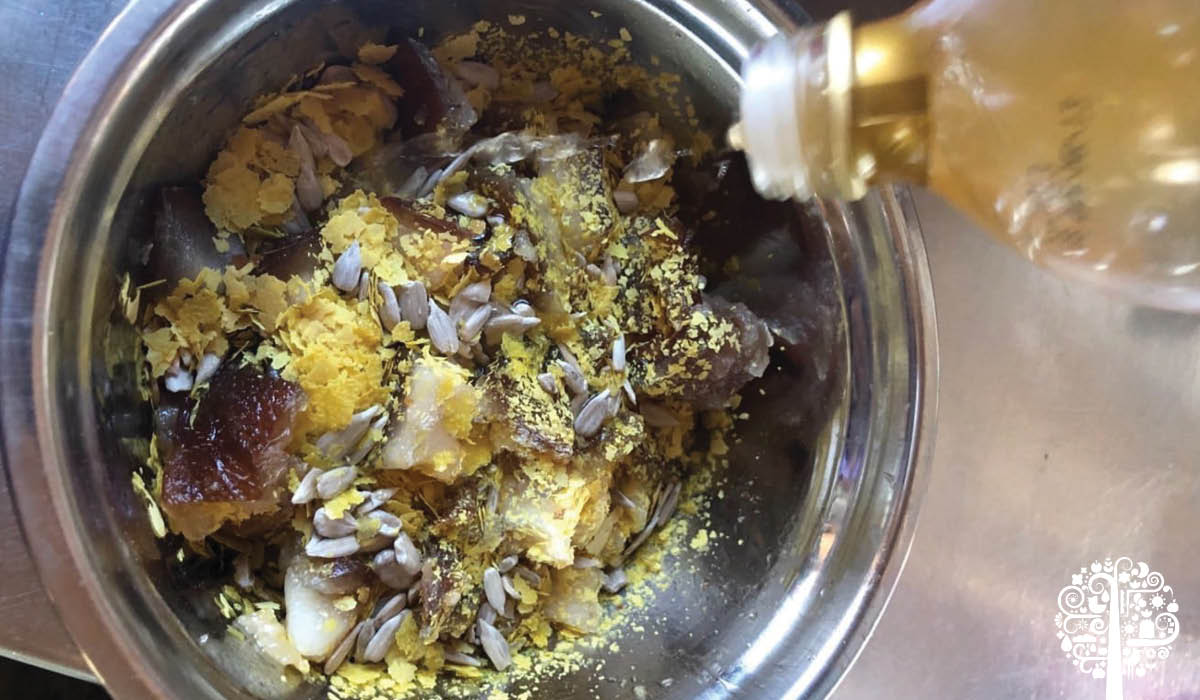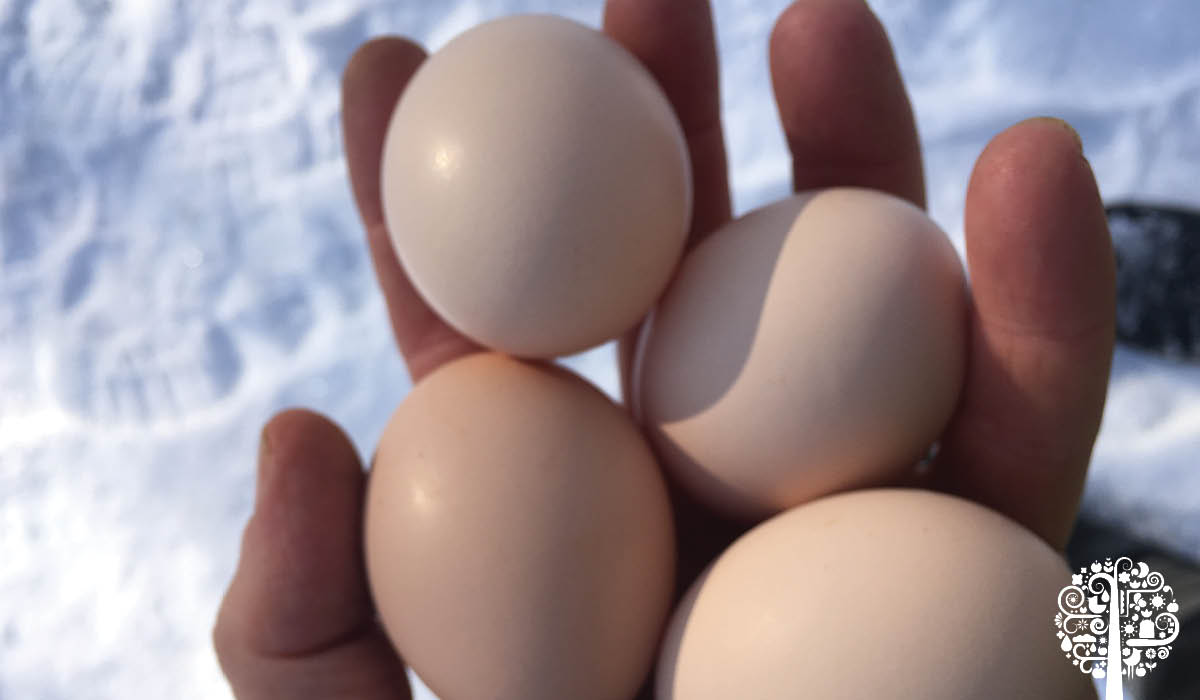Chickens in winter may bring to mind dark and dingy coops with mountains of frozen manure soaring upwards, but it doesn’t have to be this way. Even in the winter, you can use the birds to prepare new ground if you are set up to move them in the springtime.
The Structure
I keep my ten hens and one rooster (Triple Junior) in an old car tempo 12 by 30 feet, now almost buried by snow. In my experience, ventilation is more important than heat, so I keep openings on both ends of the structure to keep airflow happening.
In ten years, I have had no issues, and most hens end up dying of old age. They continue to lay, albeit less, and a heritage breed like the Partridge Chantecler does help as these birds are bred to withstand semi-arctic conditions! It’s nice to connect with the chickens in such a large space; it gives structure to your day, gets you out of the house, and the few eggs are a nice bonus.
Bedding
I am experimenting with a peat by-product that the local feed store began selling. Most of my bedding is a free organic matter like leaves and wood chips, but mid-winter, when those reserves are low or frozen solid, I buy some bedding like straw, wood shavings, and if I can get it, hay. The peat bedding resulted in an immediate chicken dust bathing session upon dumping the 35-pound bag, which they expertly spread out by scratching.

I like the idea of beginning the soil-building season in the winter. The more organic matter I put down, the more planting possibilities. I have seen comments about peat bedding being potentially dangerous for chickens’ respiratory health, but my first impressions are that it is less dusty than wood shavings. Time will tell, but I like the product for now, and the chickens seem happier in it.
Greener Pastures
I have a portable coop (the John Suskovitch model) parked in the big tempo all winter; this is locked up at night to give another layer of protection from curious critters. I will move the coop out in spring, mulch the entire area, and sow it with a cover crop; I’m thinking daikon radish or forage (purple top) turnip.
I put up the coop/tempo in the fall on a rocky, recently excavated site that will be lush and green by midsummer, thanks to the massive fertilizer boost. I will leave the structure up and take the tarp off. Next fall, I’ll install the tarp again and move the whole flock inside, ready to start the process again. For nest boxes, try Pine needles; the eggs are so much cleaner!
Food
Chickens love fat, and in the winter, making them creative treats perks them up and results in increased egg-laying. Rendered lard, for example, is excellent; I get this from a local pasture-based farm, and once the liquid is poured off, the remaining chunks are mixed in with the feed. Throw in some berries, and BLAM! Homemade suet!
A semi-regular treat I offer is chopped kombucha scobies, some berries, a little popcorn, apple cider vinegar, some extra sunflower seeds, and some nutritional yeast if I’m feeling generous. Enjoy the feeding frenzy!
Sprouted grains are another easy food to add to the diet, and I would say they’re crucial to bird health in a place with long winters; that little bit of greenery seems to give them an immediate morale boost.

If you can get it, barley is easy to sprout, but I couldn’t locate any this fall, so I am using rye. You can find grains through feed stores or even food distributors who sell in bulk.
Considering supply chain issues, I would stock up on grains whenever you can.
I don’t use heated water bowls or heat lamps anymore, mainly because of the distance to the power outlet and overall inefficiency. I re-fill water buckets twice a day. With tarps over the inner coop and with the igloo-like structure insulated with snow, the chickens are active on all but the coldest days.

Keeping chickens in the winter is a worthy habit; no need to invest in expensive coops that will eventually rot and are hard to clean! Instead, stick to the portable structures, keep on building that soil, enjoy the chicken politics and fresh eggs that are your reward when that cabin fever sets in, and finally, don’t forget to say thank you to the flock every night!